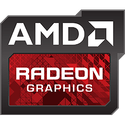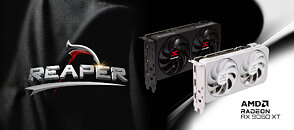
AMD Radeon RX 9070 Non-XT Dips Below MSRP for the First Time
AMD Radeon RX 9070 graphics card has dipped below its MSRP for the first time since launch, according to a price tracker by ComputerBase. One of Germany's largest online retailers, Alternate, is offering the XFX Radeon RX 9070 Quicksilver OC for €613, undercutting AMD's MSRP target of €629. This marks the first time since launch that consumers can purchase the card at a sub-MSRP rate. When the Radeon RX 9070 and its faster sibling, the RX 9070 XT, debuted in early March, both models briefly sold at their intended MSRPs of €629 and €689, respectively. Soon after, retail prices surged, and the cheapest listings for non-XT SKU remained around €649, €20 above MSRP, for weeks.
The card features a factory OC, boosting the base clock by 8% to 1,440 MHz, the game clock by 7% to 2,210 MHz, and the boost clock by 7% to 2,700 MHz, while the memory clock runs at an effective 20.1 Gbps. A ComputerBase pricing bot dedicated to tracking Radeon RX 9000 series fluctuations finally displayed the offer after an earlier error had prevented listing. Meanwhile, the RX 9070 XT remains priced above €700, with no comparable sub-MSRP listings. Enthusiasts hoping for a similar price drop on the XT variant will need to wait and monitor whether other retailers follow Alternate's example or if further price adjustments occur in the coming weeks. If you see a good deal, it may not be there for long, so act swiftly!
The card features a factory OC, boosting the base clock by 8% to 1,440 MHz, the game clock by 7% to 2,210 MHz, and the boost clock by 7% to 2,700 MHz, while the memory clock runs at an effective 20.1 Gbps. A ComputerBase pricing bot dedicated to tracking Radeon RX 9000 series fluctuations finally displayed the offer after an earlier error had prevented listing. Meanwhile, the RX 9070 XT remains priced above €700, with no comparable sub-MSRP listings. Enthusiasts hoping for a similar price drop on the XT variant will need to wait and monitor whether other retailers follow Alternate's example or if further price adjustments occur in the coming weeks. If you see a good deal, it may not be there for long, so act swiftly!










































































